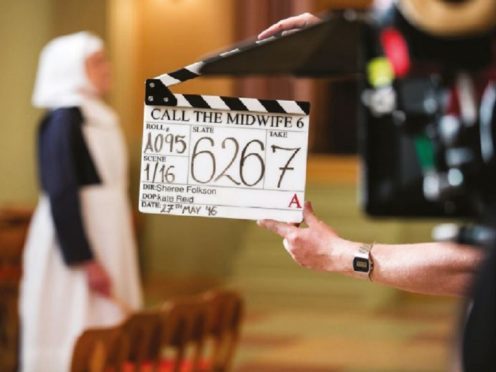There is a widening gender gap among television directors in the UK, a new report has found.
The number of television episodes directed by women fell from 27% to 24% between 2013 and 2016, a drop of three percentage points, a study by Directors UK found.
Just one in four television programmes broadcast in that period was directed by a woman, and all four of the main UK broadcasters showed a decline in the use of female directors.
We’ve heard so much talk about making progress on inequality – but our figures show the reality. Here are just some of our key TV statistics: https://t.co/oMp5ZzT2kf #DUKequality pic.twitter.com/zNd8jyBnBz
— Directors UK (@Directors_UK) August 22, 2018
Directors UK, the professional association of UK screen directors, is now calling for broadcasters to commit 0.25% of their commissioning spend for all programme making to fund industry access schemes to close the gender gap.
Channel 4 saw a 5.4 percentage point decline in the number of episodes directed by women between 2013 and 2016, while Channel 5 experienced a 2.9 percentage point drop.
In the same period, BBC and ITV saw a 1.8 and 1.5 percentage point decline respectively.
The percentage of episodes of TV directed by men increased from 73% to 76, in the same period, up by three percentage points.
Today we release ‘Who’s Calling the Shots?’, our new report on gender inequality in UK TV. Overall the gender gap continues to widen… Read the report and our recommendations: https://t.co/oMp5ZAaDIP #DUKequality pic.twitter.com/8rYM5lTuIP
— Directors UK (@Directors_UK) August 22, 2018
Factual programming across the main broadcasters showed the most significant decrease in the use of female directors, with a drop of ten percentage points.
Children’s television also showed a significant decline, with a fall of five percentage points.
There were areas of improvement, the study found, with an increase in female directors on multi-camera and entertainment programmes and in drama and comedy.
These are two areas where there have been targeted career development initiatives for female directors.
A previous initiative to place women directors in on-set career development placements on soaps has resulted in a 7.3 percentage point increase in the number of female directors.
The report looked at data from 47,444 episodes of UK-commissioned television programmes broadcast on the BBC, ITV, Channel 4 and Channel 5 between 2013 and 2016, and found women make up a third of the workforce in the dataset, but only direct a quarter of the work.
The organisation is now calling for Ofcom to make it mandatory for all UK broadcasters to monitor and publicly report the diversity of those making programmes for them, including freelancers, and to set broadcasters targets to use production crews that reflect the demographics of the UK population by 2020.
Broadcasters should also monitor and publish the equality data of senior production roles such as producers, writers and directors as well as the heads of departments, Directors UK said.
Toral Dixit, a board member of Directors UK, said: “It is not acceptable that women make up one third of working directors in the UK but only direct one in four television programmes.
“To generate a shift towards gender equality, broadcasters must embrace positive interventions across all genres and deliver fair and transparent hiring practices for both freelancers and staff.
“Targets must be set and tracked through mandatory monitoring so successes can be built on and replicated across the industry.”
The organisation’s chief executive Andrew Chowns added: “While the overall decline is very disappointing, results in continuing drama (soaps) show that collaborative interventions made in partnership with broadcasters and production partners do work to unlock new opportunities for women directors by developing skills and building expertise.
“These workplace initiatives must now become more widely available, so we are asking broadcasters to commit 0.25% of their commissioning spend across all programmes to fund industry access and career development schemes for underrepresented groups.”
